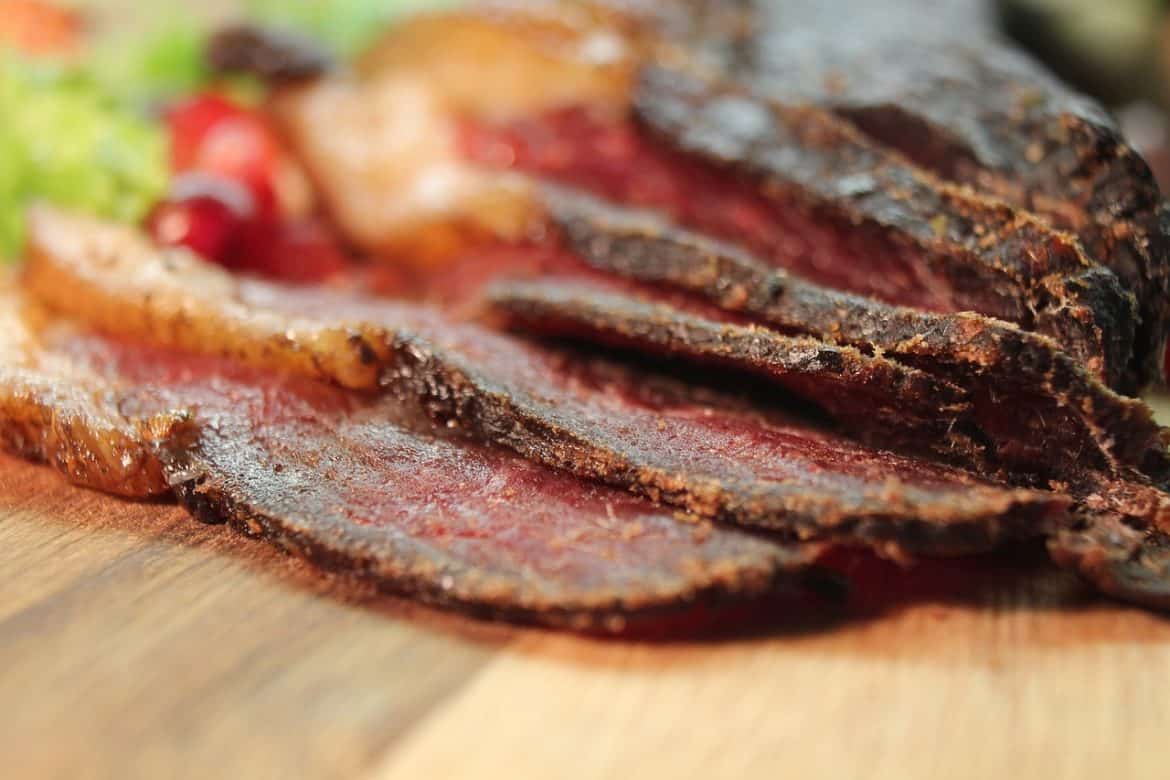
This post is about how to make your own curing chamber.
Our ancestors cured meat to survive, so it can’t be that complicated, right? Well, as humanity has advanced so has the science of food preservation. Curing meats is part of the cooking field called charcuterie.
Curing Process Basics
A combination of spices and drying methods preserve meats. Modern technology allows chefs to finely tune the environment used for curing meats.
Bacteria is unable to survive once the water content in a meat reaches a low lever. This is also helped by having a high salt content.
However, the ability to monitor the conditions of a curing chamber does not necessarily boost taste or quality. Although it can help the novice charcuterie chef to develop a safe and efficient methodology.
Control the Conditions:
Even without modern technology, curing meat requires a certain control of environmental factors. The conditions that must be controlled during the meat curing process are temperature, humidity and air flow. Although you may be able to use a storage room, basement or other area for curing meat, the ideal area will be isolated from volatile external elements. For example, curing meat in a garage can expose meat to exhaust fumes as well as various temperature and humidity changes.
For most people, building a meat curing chamber is the best option. The chamber protects meat from fluctuating conditions and can be closely regulated. Surprisingly, a meat curing chamber is relatively easy to construct. It is between the beginner and intermediate DIY level. Luckily it is also extremely inexpensive.
Materials:
An old frost-free refrigerator
Search your local classified listings or Craiglist for an old refrigerator. Free is the best price and $25 should be the maximum. Remove the shelves as needed. Perhaps leaving the top shelf as a hanging mount. There should be enough room in the bottom of the refrigerator for additional equipment.
A Freezer Temperature Controller
Those old refrigerators produce temperatures much too cold for curing. A Freezer Temperature Controller regulates the temperature of a refrigerator. It works by turning power on and off to achieve the pre-set conditions.
A Humidity Controller and an Ultrasonic Humidifier
A Humidity Controller measures and regulates the power needed to reach the ideal humidity levels in your curing chamber, As that occurs, the Humidifier adds moisture to the air. Only add distilled water to your Humidifier. Also, choose one that will power up automatically in response to the Humidity Controller.
A Fan
Humidity Controllers are built with a power outlet, and by connecting a power strip to this outlet, you can simultaneously power the Humidifier and a Fan. The Fan will circulate the air and disperse the moisture in the air.
A Dual Temperature and Humidity Sensor
This tool makes it easy to monitor the conditions of your curing chamber and can catch any discrepancies between measurements from your Freezer Temperature Controller or Humidity Controller. Additionally, a Calibration Kit is an inexpensive, optional tool that will ensure accurate measurements.
Additional Notes: Recipes and Rodents
Curing chambers are located in areas without a lot of activity. However, this positioning, paired with food, can be rather inviting to rodents.
If you are concerned about rodents, you may want to drill holes in the side of the chamber to run all electrical cords. Small mesh openings provide airflow.
In conclusion, your curing chamber is going to look awfully funny without any meat! You can find recipes. on sites like this one as well as Honest-Food.Net. Honest Food has simple, straightforward approach to living and eating as our ancestors have.

